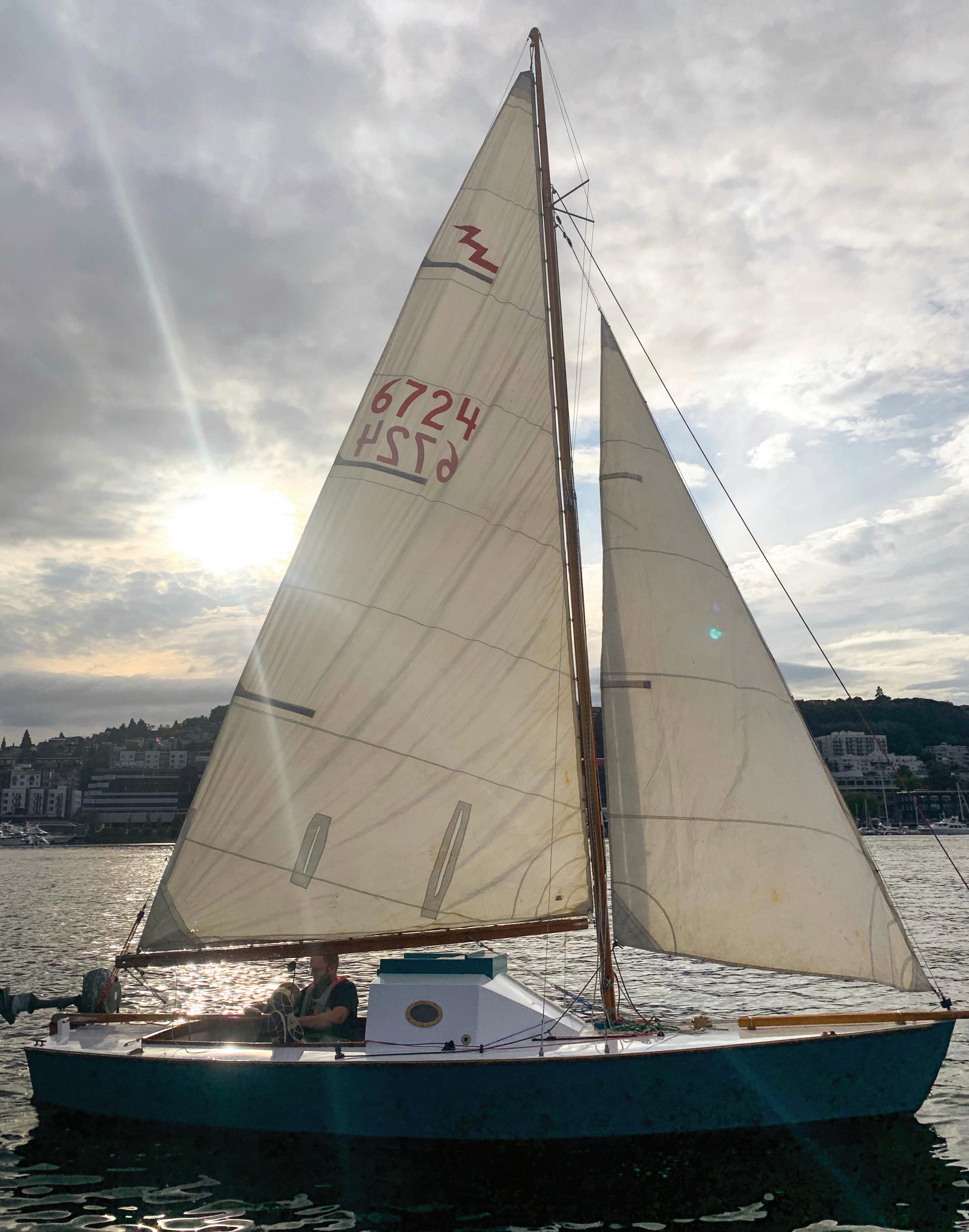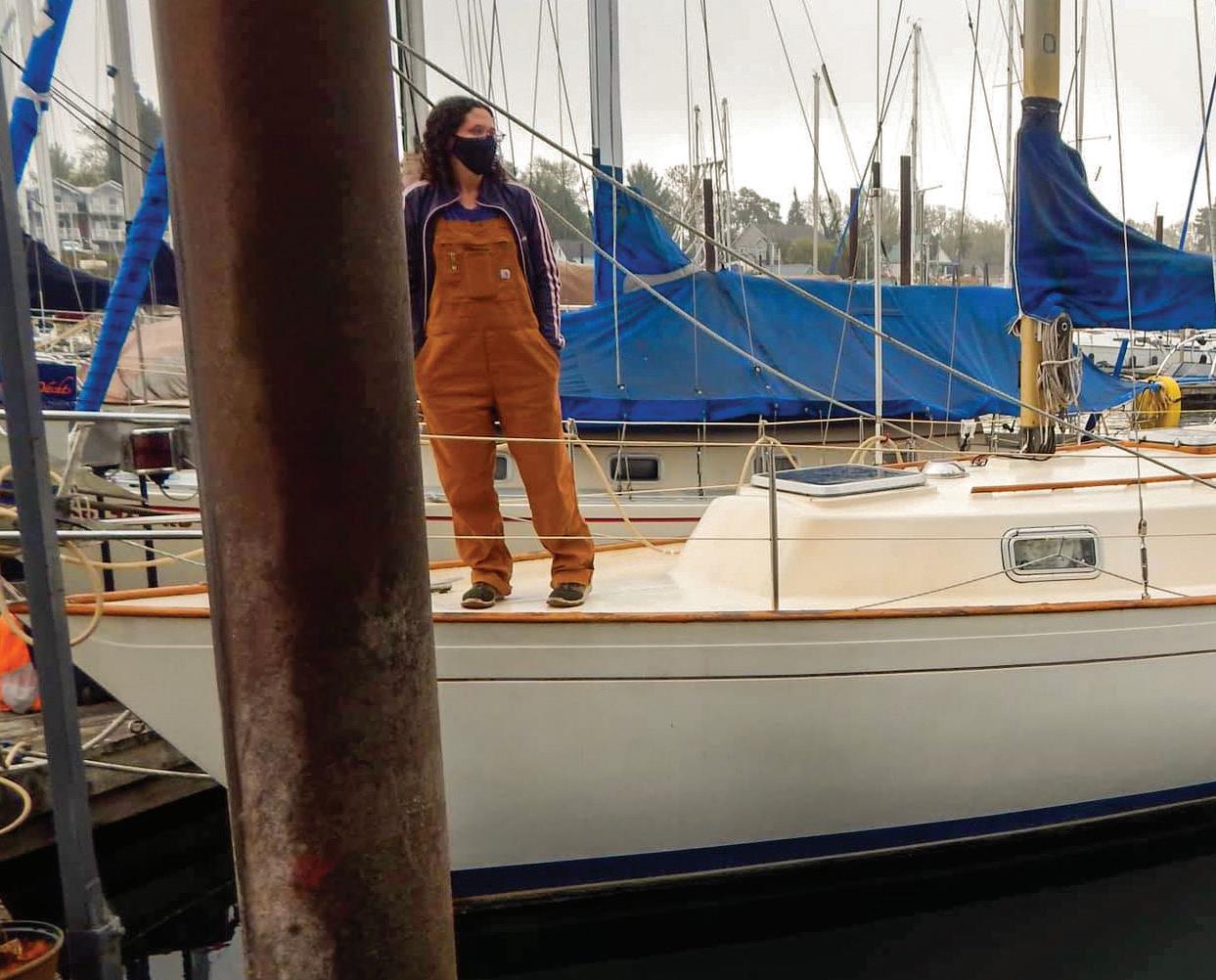
6 minute read
The Region’s First Maritime High School

by Deborah Bach
Photo courtesy of Port of Seattle Photo courtesy of Salish Sea Expeditions Photo courtesy of Northwest Maritime Girls Boat Project 48º NORTH Photo courtesy of Salish Sea Expeditions
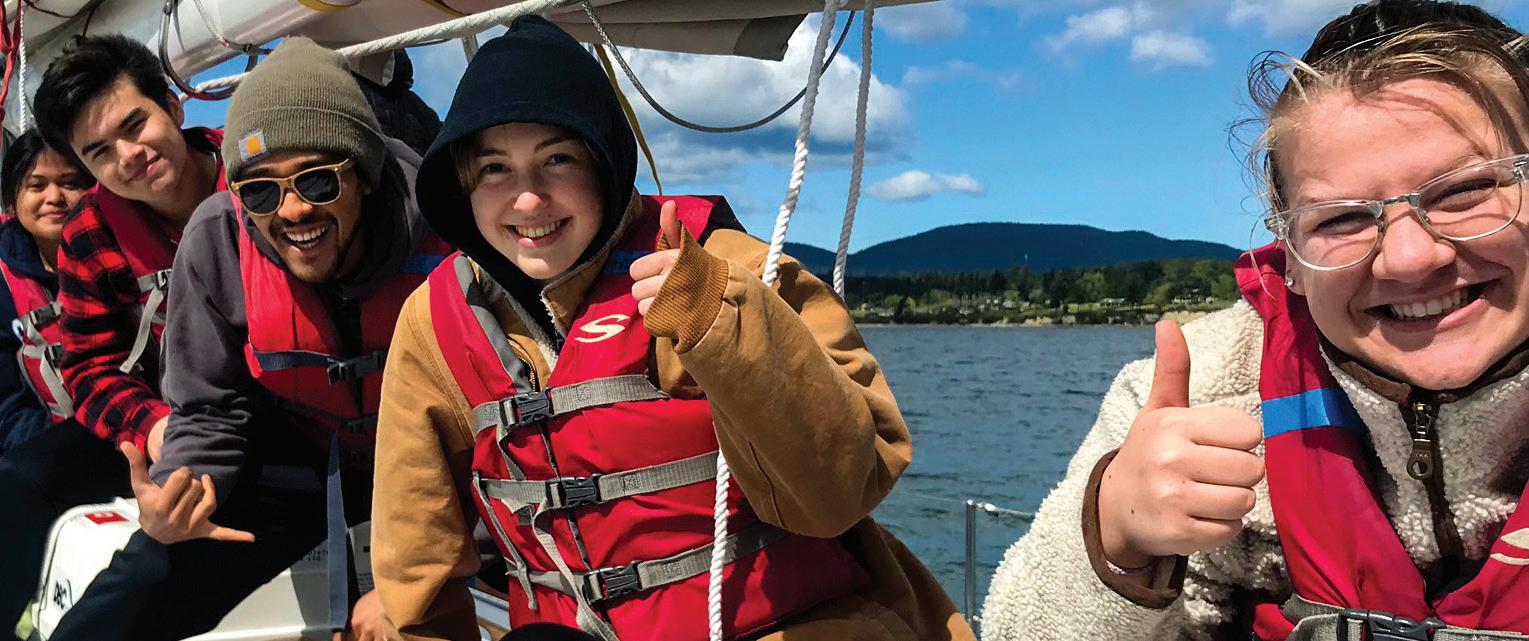
Photo courtesy of Port of Seattle

REGION’S FIRST
MARITIME HIGH SCHOOL TO OPEN IN SEPTEMBER 2021
Afew years ago, Port of Seattle Commissioner Ryan Calkins was asked to judge a class presentation by a group of sophomores at Raisbeck Aviation High School in Tukwila, Washington, which focuses on preparing students for careers in aviation and aerospace.
Impressed and inspired by the students’ work, Calkins came away with a question in his mind. Why, he wondered, wasn’t there a similar school for the maritime industry?
“Maritime has a similar-sized ecosystem in Seattle and has a very promising future in terms of workforce development,” Calkins says. “But there was nothing like that for maritime.”
Those musings were the genesis of the new Maritime High School opening this September with its first ninth-grade class. Administered by Highline Public Schools, the regional school will offer project-based learning and internships aimed at giving students the skills and knowledge needed for maritime careers. Its hybrid approach will combine learning in the field with virtual instruction and classroom time, and its curriculum will focus on marine science, the environment, and maritime careers.
The school will be temporarily based at Highline’s interim site in Des Moines and led by principal Tremain Holloway, a coprincipal at Highline High School and former assistant principal
Photo courtesy of Port Townsend Maritime Academy Skills Center

Photo courtesy of Port Townsend Maritime Academy Skills Center

Photo courtesy of Alexandria Seaport Foundation at the aviation high school. The district hopes to enroll up to 44 students the first year through an admissions lottery and has held a series of information sessions in Spanish and English for prospective students and parents.
There are maritime education programs around the region, including professional training at Seattle Maritime Academy, Pacific Maritime Institute and Skagit Valley College, as well as numerous high school-based programs. The Northwest Maritime Center in Port Townsend offers a two-week program for seventhgraders that includes time on the water and seamanship skills, and a half-day program for juniors and seniors (a collaboration with West Sound Technical Skills Center and Port Townsend Public Schools) that runs through the school year and allows students to earn educational credits.
Calkins attributes the lack of a dedicated maritime high school in Washington before now as a reflection of a sector without an identifiable industry leader like the aviation industry has in Boeing or Alaska Airlines.
“Maritime is much more fragmented,” he says. “You’ve got ship-building, you’ve got commercial fishing, you’ve got recreational boating, you’ve got the ferry system, you’ve got naval architecture, you’ve got marine biologists. But that’s also why it’s such a resilient field and why it’s so promising going forward.”
Highline Public Schools serves about 18,000 students in six communities south of Seattle. The project is a collaboration between the school district, the Port of Seattle, the Northwest Maritime Center in Port Townsend, and the Duwamish River Cleanup Coalition.
The school’s curriculum is still being developed but is expected to help prepare students to start a career in a range of maritime positions or continue studying in a two- or four-year college program. There are two overarching goals for the school — to cultivate the next generation of maritime industry workers to replace a pending wave of retirements and to help diversify a workforce that has traditionally been primarily white and male.
According to a 2020 report published by the project’s supporters, Washington’s maritime industry is growing at about 6.4 percent a year and has an average workforce age of 54. Without a stronger career pipeline, the industry is expected to have difficulty filling jobs in the future.
Many of those jobs pay more than a living wage — the average wage for maritime jobs in Washington is $70,800, compared with $52,000 for jobs statewide overall; in King County, maritime businesses provide more than 19,500 jobs that pay $82,800 a year on average.
But while students of color make up more than 70 percent of students in communities closest to many of the region’s maritime industries, the sector does not
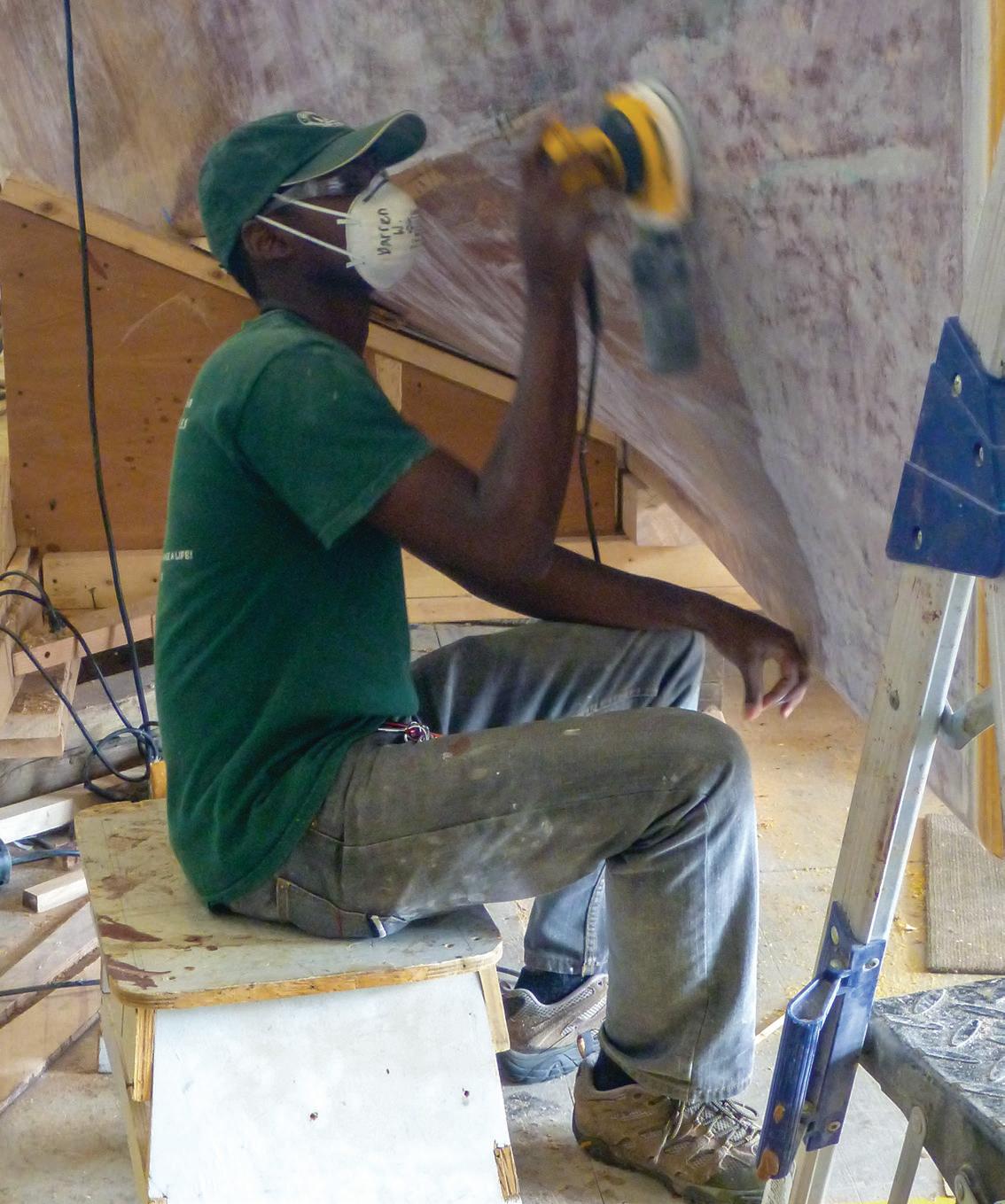
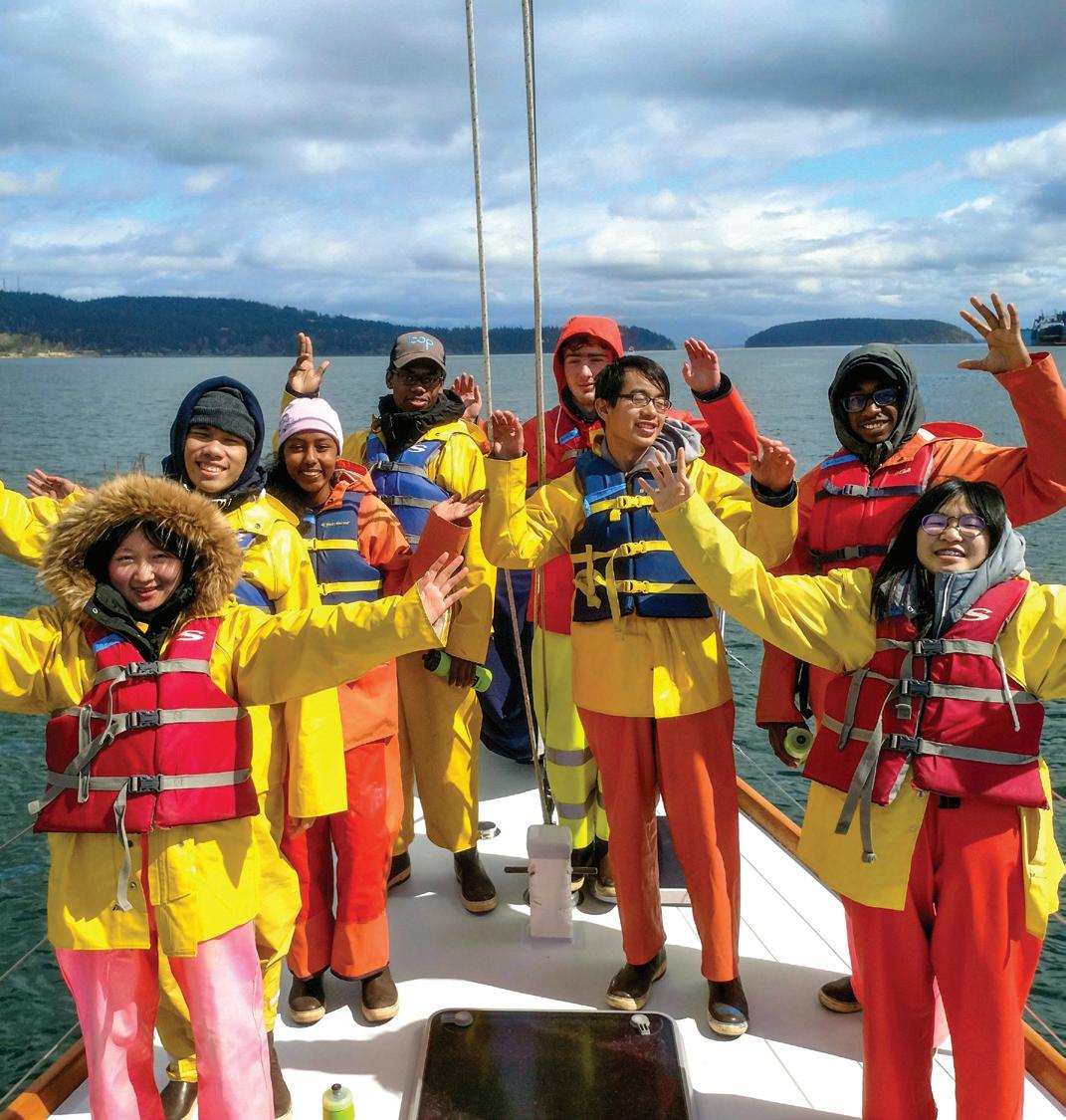
reflect that diversity. “At a time when our region has created more new wealth than most other metropolitan areas in the country, area schools offer few educational career pathways into maritime careers and marginalized communities have limited access to waterfront jobs,” the report notes.
The school’s location in the Highline Public Schools district, which also includes Raisbeck Aviation High School, was a strategic choice. The district has a diverse student population, with about half of families using a language other than English. About 40 percent of students identify as Latino and about 15 percent each as Asian and Black, and 69 percent of students qualify for free or reduced lunch.
Bernard Koontz, executive director of teaching, learning, and leadership for Highline Public Schools, says the Maritime High School is a good fit for the district in several ways. Highline has experience in running a regional high school based around a career area, he points out, and the maritime school meshes with the district’s commitment to social justice and providing experiences geared to its student population.
“There is a focus around actively providing equitable and anti-racist options within the education system, and proactively doing that work is really important,” Koontz says.
“This is an opportunity to advance that work by creating a program that’s specifically designed to bring opportunities to kids who otherwise wouldn’t get them. When you have an opportunity to open up a new pathway, it increases the likelihood that kids will find something that’s going to be a good match for them.”
The Duwamish River Cleanup Coalition is partnering on the project as a community engagement liaison. Magdalena Angel-Cano, the organization’s community engagement and communications specialist, says young people in the Duwamish Valley have long had a “dream” of a school focused on the maritime industry.
“It not only brings opportunities, education-wise, to our youth, but it also brings a lot of empowerment to the whole community,” she says.
After the presentation by the aviation high school students, Calkins held a series of informational interviews with educators, industry experts, students, parents and others to float his idea for a maritime high school. He also convened a summit in September 2019, bringing together dozens of stakeholders to discuss the project.
“Almost without exception, people thought it was a really interesting idea and worth pursuing,” Calkins says.
The Northwest Maritime Center is providing fundraising support and helping inform curriculum development for the new school. Jake Beattie, the center’s executive director, says Maritime High School builds on the center’s educational efforts by providing a comprehensive education and connecting students with career opportunities in the maritime industry.
For years, Beattie says, he’s been part of discussions around how to cultivate the next generation of maritime workers as the current workforce ages, to little avail.
“One of the reasons I’m so excited about this project is that it stops asking that question and starts adding a solution,” he says. “It feels like what we need to do.”
“We need to get people involved and aware at a community level so that more people have meaningful connections to the water,” Beattie says. “I think this high school can be that catalyst that we can build off of.”

Photo courtesy of Port of Seattle
Deborah Bach is a longtime Pacific Northwest boater and is a founder of Three Sheets Northwest. You can find her sailing her Passport 40, Meridian, around the Salish Sea.

